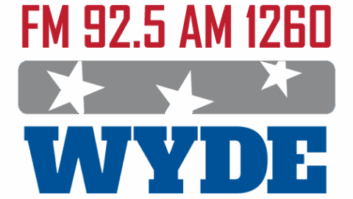Given that the now-defunct broadcast division of RCA helped finance and supply equipment to many of America’s early radio stations, it’s not surprising that RCA microphones dominated broadcast studios for much of the last century.
Those venerable RCA 44 and 77-series microphones became radio icons, and the rich sound of their ribbon elements provided gravitas to the human voice. Today, those original microphones are prized collectors items and displayed as proud symbols of the medium’s golden age.
In more recent years, radio studios standardized on large, rugged dynamic microphones such as the Electro-Voice RE-20, Shure SM7 and Sennheiser MD 421. Each of these venerable microphones has evolved over the years and continue to be found in radio announce and voiceover studios.
The next generation
Today, a new generation of microphones is vying for favor with radio broadcasters. Acceptance won’t come easily. These newcomers must compete with a handful of products that have performed so well over the years that generations of engineers see no reason to tamper with success.
It is notable that one of the great names in microphones – Neumann – recently decided to enter the radio broadcast market. Not that Neumann’s legendary condenser microphones haven’t been used in certain high-end broadcast facilities; but, as a whole, American radio stations have found the price too steep for these staples of the recording industry.
The new Neumann BCM 104 microphone was designed to change that, through features and price. Using a large-diaphragm condenser capsule, it has a cardioid pattern with internally switchable proximity effect compensation. A second switch allows the sensitivity to be reduced by 14 dB.
The microphone grille twists off for quick cleaning. Neumann offers optional, color-coded grilles so that, for reasons of hygiene, each announcer working at a studio console can use his or her individual grille.
Directly in front of the capsule, mounted on a frame holder, is a piece of fine gauze that serves as a pop screen. It has an elastic mount against structure-borne noise and is compatible with standard broadcast-style microphone arms. And, a priority to the bean counters of radio, it’s affordable. The BCM 104 is discount priced for under $625.
Audio-Technica is active in this market with its AT3060, a cardioid, phantom-powered tube mic for users who would like that brand of warm sound.
A large-diaphragm condenser element is said to provide high sensitivity and smooth sound reproduction. The company picks the tubes by hand. Features on this model include a shock-mounted tube assembly, nickel-plated brass acoustic element baffle, a large coupling transformer and an included shock mount and pouch. The AT3060 carries a price tag of $599 and is seen on the street for about a hundred dollars less.
Another veteran of the radio microphone wars is Shure, a company that has attained great success over the years with its SM7 series – the current model being the SM7B. However, Shure is now recommending one its studio condenser models for broadcasters.
Shure’s KSM27 is a side-address condenser microphone featuring a cardioid polar pattern with an externally biased one-inch diaphragm, low self-noise and an extended frequency response tailored for vocal tracking and instrument recording.
There’s also an integrated three-stage “pop” protection grille and internal shockmount. Suited for broadcast applications (and used on NBC’s “Tonight Show”), the KSM27 is sold widely at a street price of under $300.
Another recent contender is the AKG C4500B-BC “On Air” broadcast microphone. This front-address, large-diaphragm condenser is immune to electrostatic and magnetic fields and provides a wide dynamic range and low self-noise.
Features include switchable 20 dB pad and low-frequency rolloff (6 dB/octave below 120 Hz), internal shockmount, spider suspension and windscreen. Street price is about $400.
More mics
Like a television camera, the Rode NTB broadcast microphone has a switch-controllable indicator tally light that signals when it’s on the air. It features a cardioid pickup pattern; ultra-low noise; gold-sputtered pressure gradient transducer; voice-tailored low-cut filter; pop filtering; internally shockmounted capsule; and rugged stainless steel body.
Offering a warm vocal sound, wide dynamic range and exceptional frequency response, Rode’s NTB broadcast condenser has a street price of under $330.
In radio, the looks of a microphone matters and that design choice is clearly behind the Heil Classic Pro, an RCA-inspired look-alike of a 1930s-era broadcast microphone.
Rather than a ribbon element, the Classic Pro uses Heil’s Proline wide frequency range broadcast element. The manufacturer said it achieves high performance by using a special magnet structure and a large aluminum 1-1/8 inch low mass voice coil assembly.
The Classic Pro, said Heil, produces a linear cardioid pattern and its design reduces proximity effect. The microphone features a sorbothane rubber shockmount with breath blast filter. Retail price is $269.
No overview of broadcast microphones could be complete without a mention of Wes Dooley’s Audio Engineering Associates. One of the audio industry’s most gifted inventors, Dooley has always had a fascination with the classic radio ribbon microphones.
After creating a series of replica parts for restoration and eventually manufacturing the superb AEA R44C, a replica of the classic RCA 44 ribbon studio microphone, Dooley picked up where RCA left off. That journey took him to the AEA R84, an affordable (under $1,000) large ribbon geometry microphone suitable for broadcasters who want to return to the classic ribbon sound.
At 0.00007 of an inch, the ultrathin, low-tension ribbon element of the R84 offers a performance that is intimate, warm and detailed.
“It’s a forgiving tool that makes your recording work easier, as it literally sounds good on everything,” said Dooley.
The R84DJV is a variation of the R84 that’s optimized for closeup voice reproduction. It is more heavily protected from the moisture and wind blasts that can occur during vocal work. The proximity effect of the R84DJV has been adjusted for an articulate sound at close working distances. The R84DJV is suited for studio broadcast work, voice overs, and “intimate” vocal recordings.







